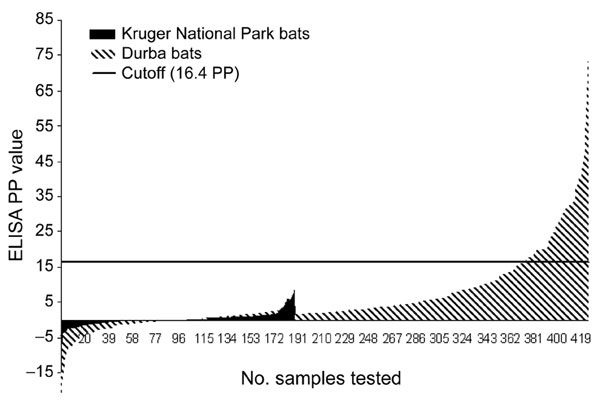Volume 13, Number 12—December 2007
Research
Studies of Reservoir Hosts for Marburg Virus
Figure 1

Figure 1. Marburg virus ELISA percent positivity (PP) values recorded on bat serum samples collected in 1999 in Durba, Democratic Republic of the Congo (n = 426), and from 1984 through 1994 in Kruger National Park, South Africa (n = 188). The cutoff PP value of 16.4 was fixed as 3 × (mean + 3 SD) of values observed in the Kruger National Park samples.
Page created: July 06, 2010
Page updated: July 06, 2010
Page reviewed: July 06, 2010
The conclusions, findings, and opinions expressed by authors contributing to this journal do not necessarily reflect the official position of the U.S. Department of Health and Human Services, the Public Health Service, the Centers for Disease Control and Prevention, or the authors' affiliated institutions. Use of trade names is for identification only and does not imply endorsement by any of the groups named above.